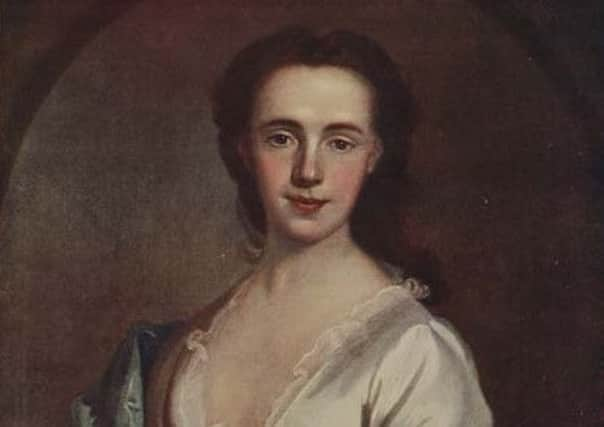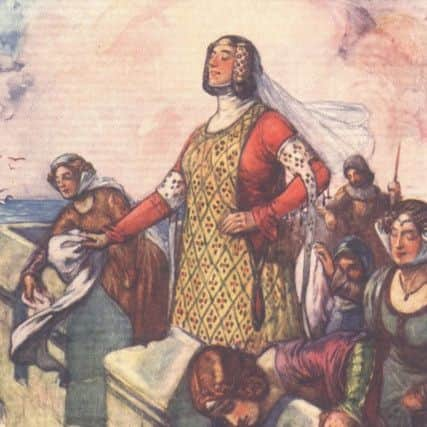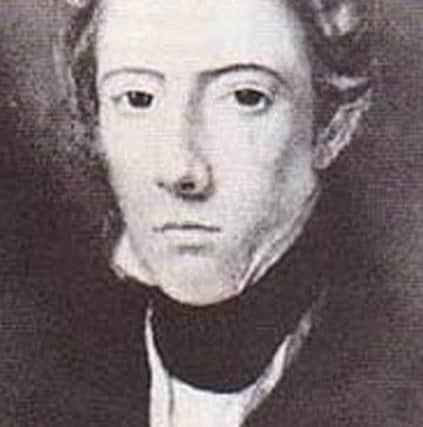Six forgotten female warriors from Scotland's past


Queen Scathach of Skye
A mythical warrior queen from Skye whose marital arts skills and battle yells were in hot demand around 200 BC.
She took her place in the Ulster Cycle of Irish Mythology following her training of the Ulster hero Cúchulainn, after whom, it is said, the Cuillin on Skye are named.


Advertisement
Hide AdAdvertisement
Hide AdHe sought out Scathach after his future father-in-law made it a condition he became a fully trained warrior before taking his daughter’s hand in marriage.
It is claimed Scáthach would train only those young warriors already skilled and brave enough to penetrate the many defences of her fortress. It is also said she sexually educated her pupils and had a gift of prophecy.
Cuchulainn travelled to Dun Scaith - which translates as Castle of Shadows - to fall under Scathach’s tutelage.
Legend goes that he helped Scathach overcome a neighbouring female chieftain, Aoife, who is also described in some accounts as the queen’s warrior sister.


Lady Christian (Christina) Bruce
Lady Christian Bruce (1273-1357) was the older sister of Robert the Bruce and played an active role in the Wars of Independence, leading the defence of an Aberdeenshire castle against English forces.
Her third marriage was to Sir Andrew Murray, appointed Guardian of Scotland in 1329.
Sir Andrew was central to the second War of Independence against Edward III, who wanted to install Edward Balliol on the Scottish throne.


Advertisement
Hide AdAdvertisement
Hide AdIn 1335, English forces besieged Kildrummy Castle in Aberdeenshire - with the defence commanded by Lady Christina.
She held out until forces, led by her husband, could march north and defeat the English, led by David de Strathbogie, Earl of Atholl, at the Battle of Culblean on November 30.
Countess Kathrine Beaumont


Following the death of the Earl of Atholl at Culbean (see above) it turned to his wife Kathrine Beaumont to defend the campaign to put Balliol on the throne
It is said she “stoutly defended” Lochindorb Castle, the family seat which sits in a freshwater loch near Grantown-on Spey, for some eight months before her rescue by Edward III’s forces.
Lady Agnes Randolph - Black Agnes
On 13 January 1338, English forces arrived at the gates of Dunbar Castle near the fallen town of Berwick but could not have forseen an encounter with Lady Agnes Randolp, also known as Black Agnes. A five-month stand off at the East Lothian pile was to follow.
Lady Agnes Randolph, whose father was a nephew of Robert the Bruce, was in charge of the caste while her husband Patrick Dunbar, Earl of Dunbar and March, was fighting English forces in the north.
On a request to surrender, it is claimed Black Agnes, so-called due to her hair colour, said: ‘Of Scotland’s King I haud my house, He pays me meat and fee, And I will keep my gude auld house, While my house will keep me.’
Advertisement
Hide AdAdvertisement
Hide AdThe Earl of Salisbury, the English commander, is said to have opened the siege by lobbing rocks at the castle walls using catapults.
The story goes that Lady Agnes sent out her maids in full view of the English to dust the walls with laced handkerchiefs.
Salisbury is said to have then deployed a huge battering ram or ‘sow’ but Agnes responded by dispatching boulders onto the weapon’s wooden cover, threatening the soldiers underneath.
AS the siege got underway, John Randolph, 3rd Earl of Moray, and Agnes’ brother, was captured and brought to Dunbar.
Salisbury threatened to hang him if there was no surrender. Lady Agnes called his bluff, pointing out she would solely benefit from her brother’s title and lands if he was to be killed.
The brother was spared and a truce was agreed on June 10 1338.
Black Agnes was later immortalised in a song as a “brawling, boisterous Scottish wench”.
Lady Anne Farquharson- Mackintosh - Colonel Anne
Advertisement
Hide AdAdvertisement
Hide AdLady Anne Farquharson- Mackintosh remained staunchly loyal to the Jacobite cause despite her husband, Angus Mackintosh, being captain of the the Black Watch, the Government force first raised to police the Highlands following the 1715 uprising and then to fight the rebels during the ‘45.
When Bonnie Prince Charlie raised the standard at Glenfinnan, it is said that Lady Anne led efforts to raise 350 Farquharson and Mackintoshes to fight with the Jacobite Army.
One account describes her as “dressed in a semi-masculine riding habit of tartan trimmed with lace, with a blue bonnet on her head and pistols a her saddle-bow, kindling enthusiasm for the Prince’s cause wherever she went”.
She is believed to be the only woman on record to have raised a clan. While she never led fighters into battle, Lady Anne handed the troops to her cousin, MacGillivray of Dunmaglass, to mobilise.
Captain Mackintosh was captured following his defat at the Battle of Prestonpans and later released into the custody of his wife.
When the couple met, she greeted him with the words, “Your servant, Captain” to which he replied, “your servant, Colonel”.
Following Culloden, Lady Anne was arrested and held at Inverness Castle for six weeks and then released without charge into her husband’s custody.
Advertisement
Hide AdAdvertisement
Hide AdThe two are said to have led a contented married life, despite their political differences.
Margaret Ann Bulkley - Dr James Barry
Dr Barry was a graduate of Edinburgh University and became a successful British Army surgeon in India and Cape Town.
After he died, it was revealed that Dr Barry was a woman - born Margaret Ann Bulkley - whose family had come up with an elaborate plot to get her into medical school.
Margaret Bulkley arrived in Edinburgh as ‘James Barry’ and graduated in 1812. She joined the army as a surgeon in 1813 the following year and was credited with improving hygiene and reorganing medical care while in the field.
It is said that her methods of nursing sick and wounded soldiers from the Crimea meant that she had the highest recovery rate of the whole war. She also performed one of the first successful Caesarean sections, in 1826, and produced a definitive report on cholera in Malta in 1848.
Bulkley ultimately rose to the position of Inspector General in charge of military hospitals.
She died of dysentery in 1865 and it is then that her true identity was revealed. The woman who laid out her body revealed that, although she had spent 46 years as a man in the British Army, ‘James Barry’ was indeed a woman.
Advertisement
Hide AdAdvertisement
Hide AdThere was speculation whether Dr Barry had been born a hermaphrodite but a letter from his doctor, Major D. R. McKinnon, recalled a discussion with the woman who had tended to Dr Barry following death.
The letter stated: “She then said that she had examined the body, and was a perfect female and farther that there were marks of him having had a child when very young. I then enquired how have you formed that conclusion. The woman, pointing to the lower part of her stomach, said ‘from marks here. I am a maried [sic] woman and the mother of nine children and I ought to know.’
